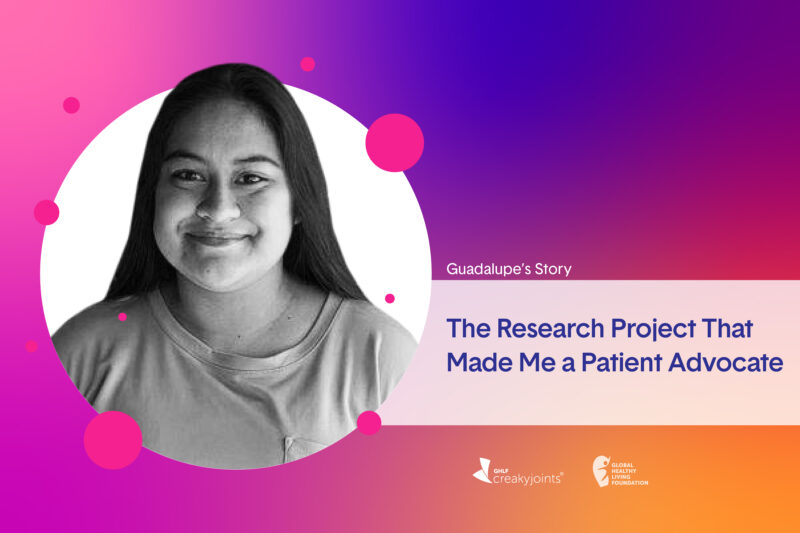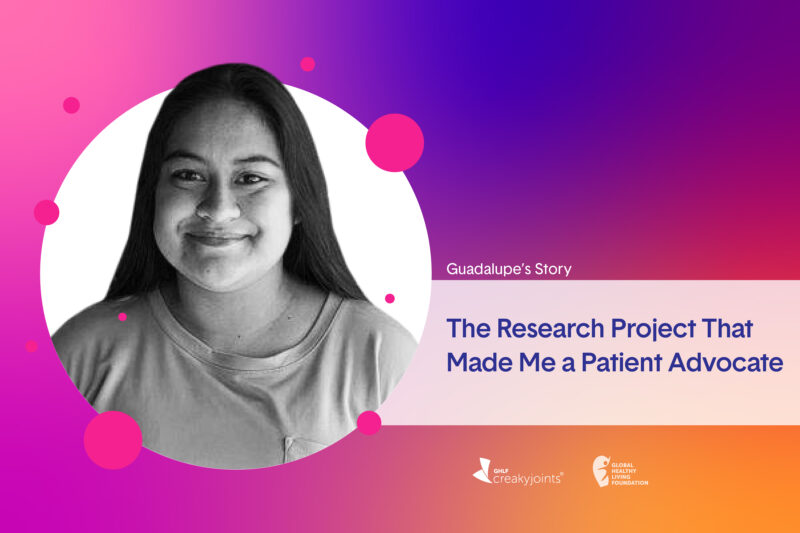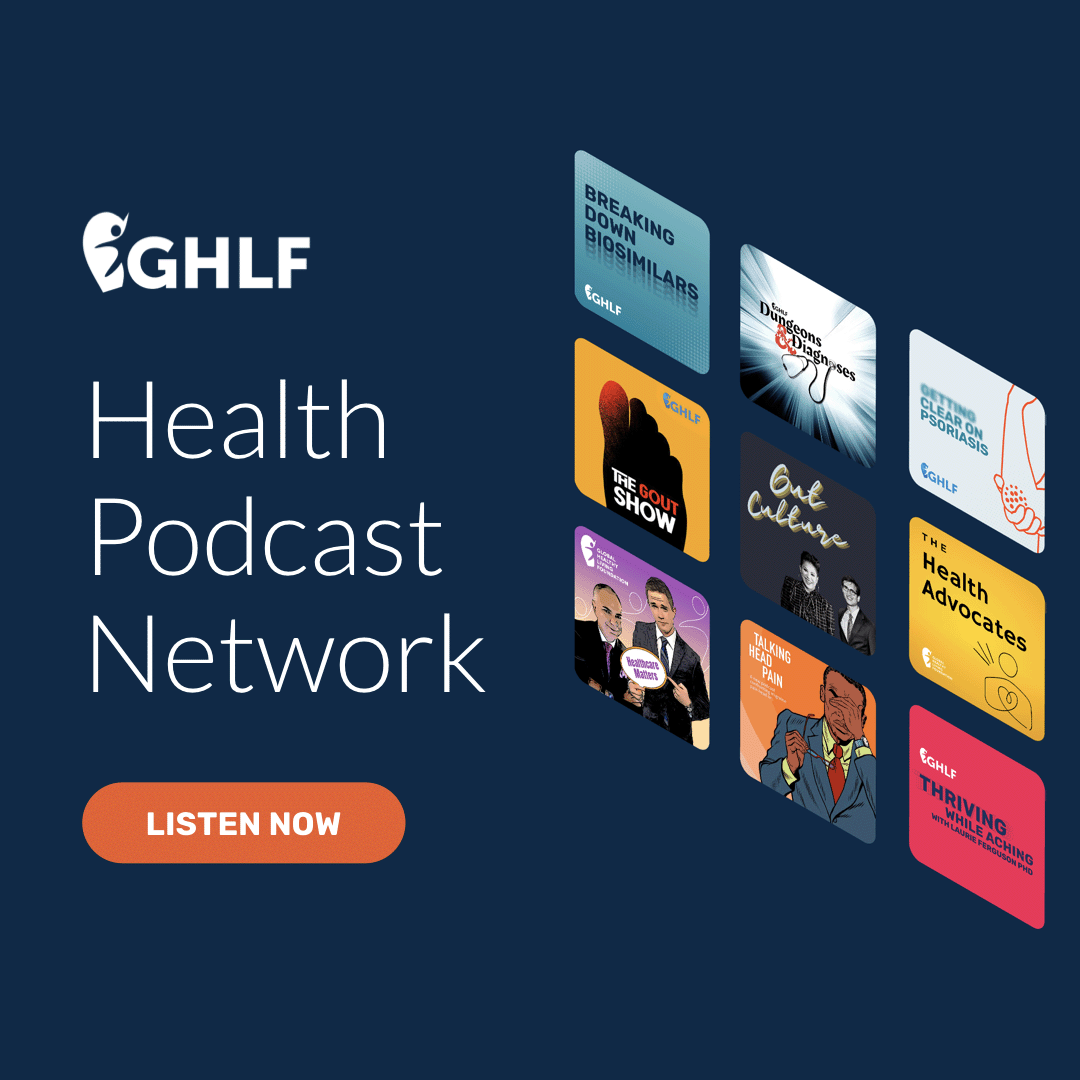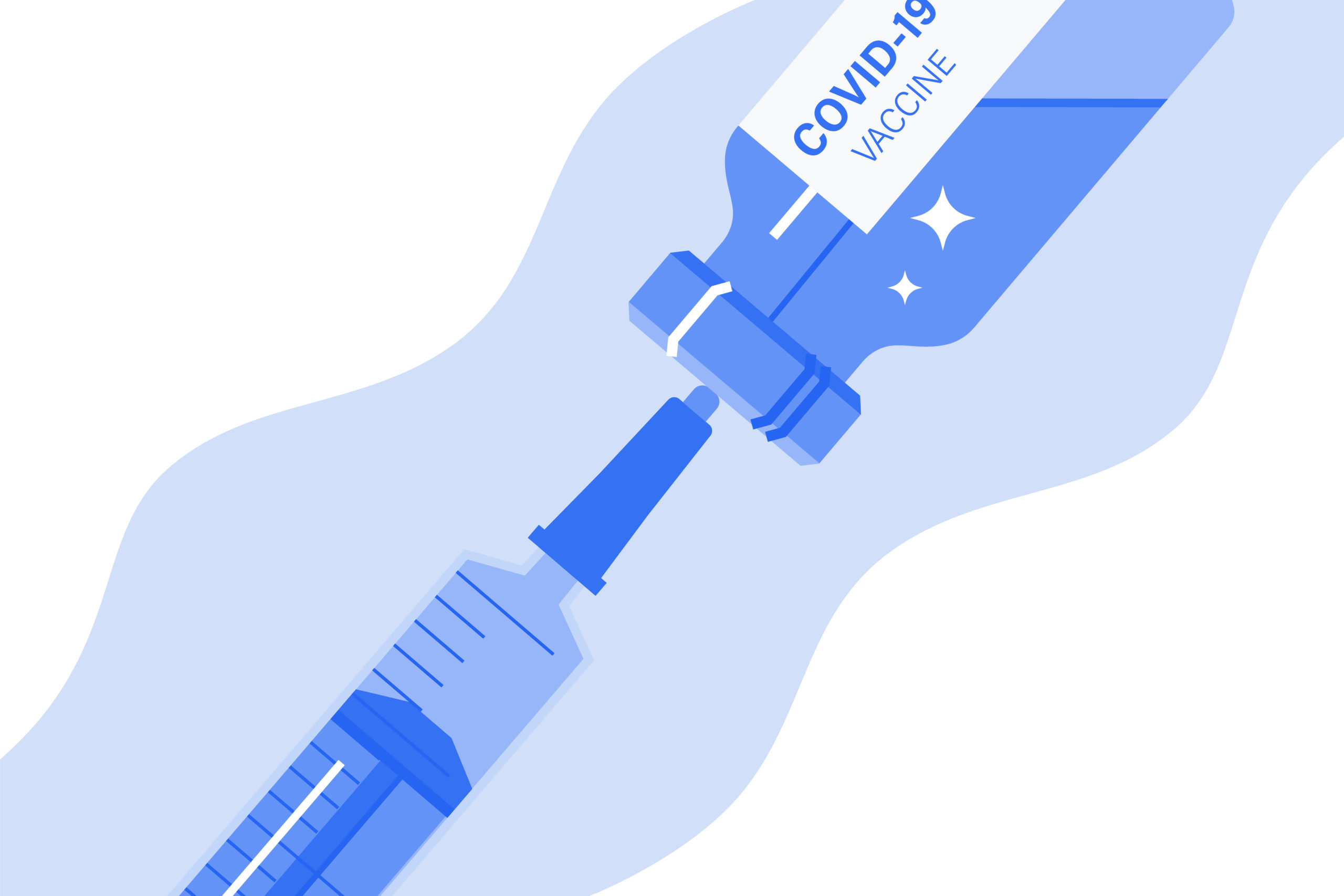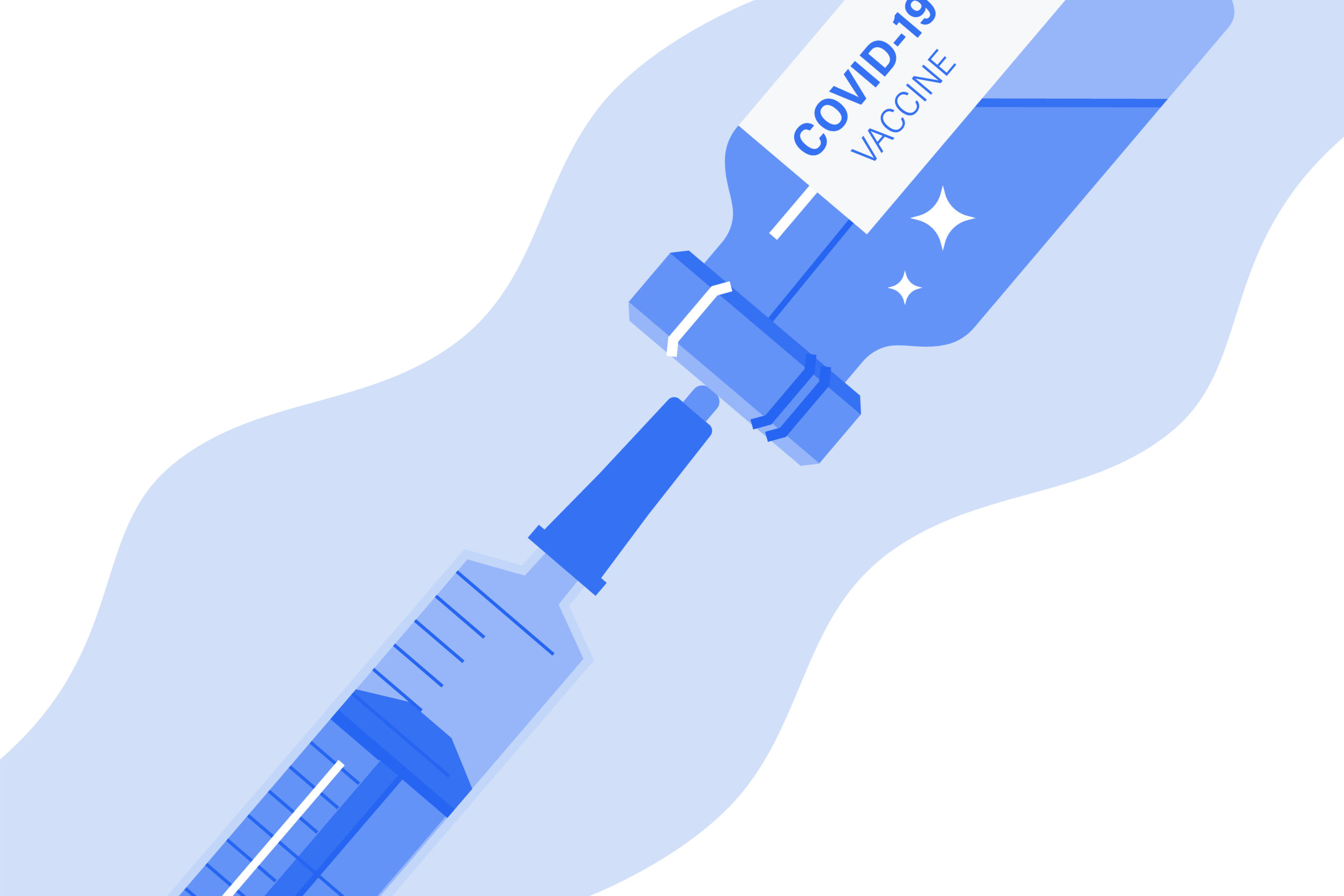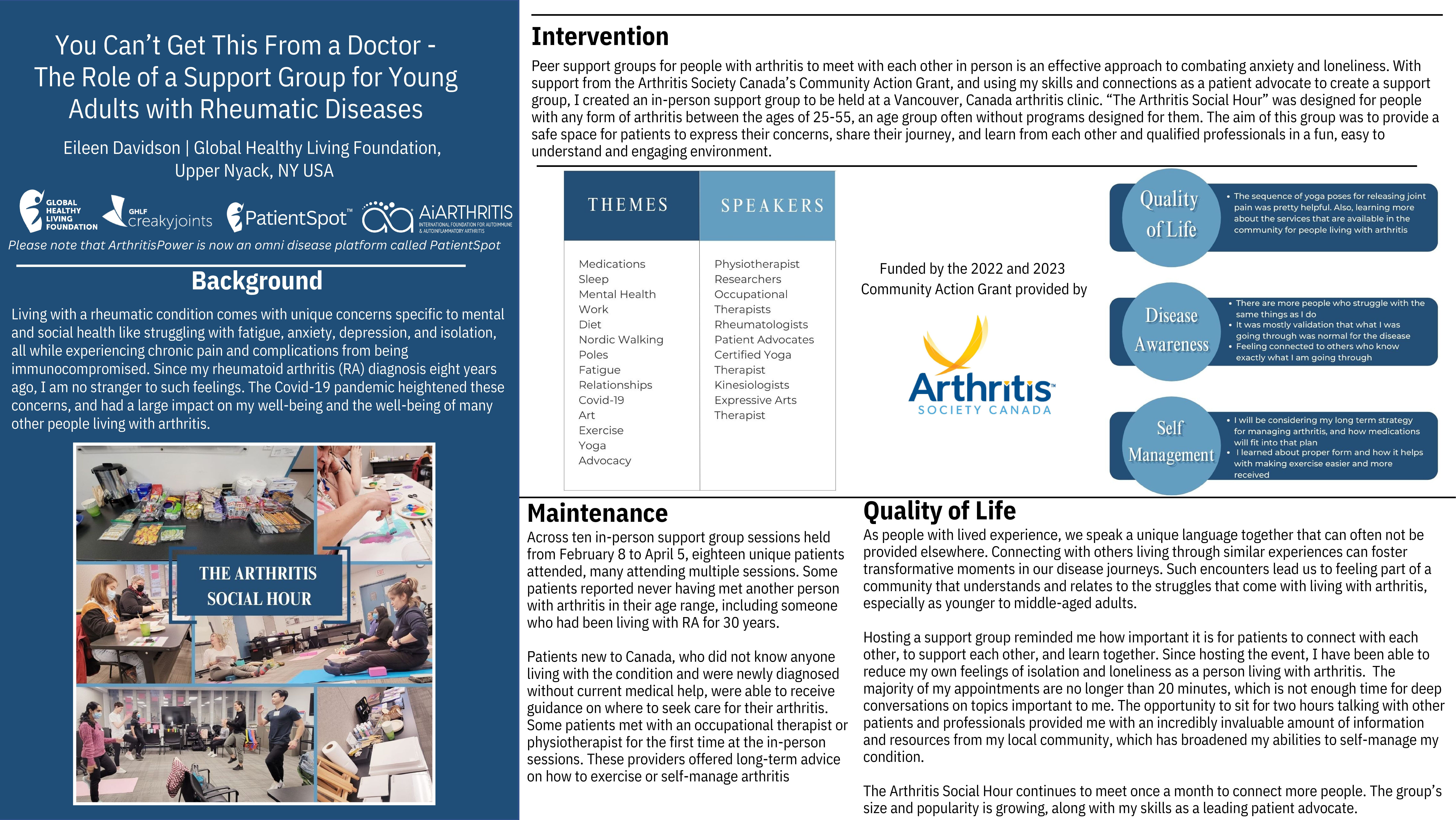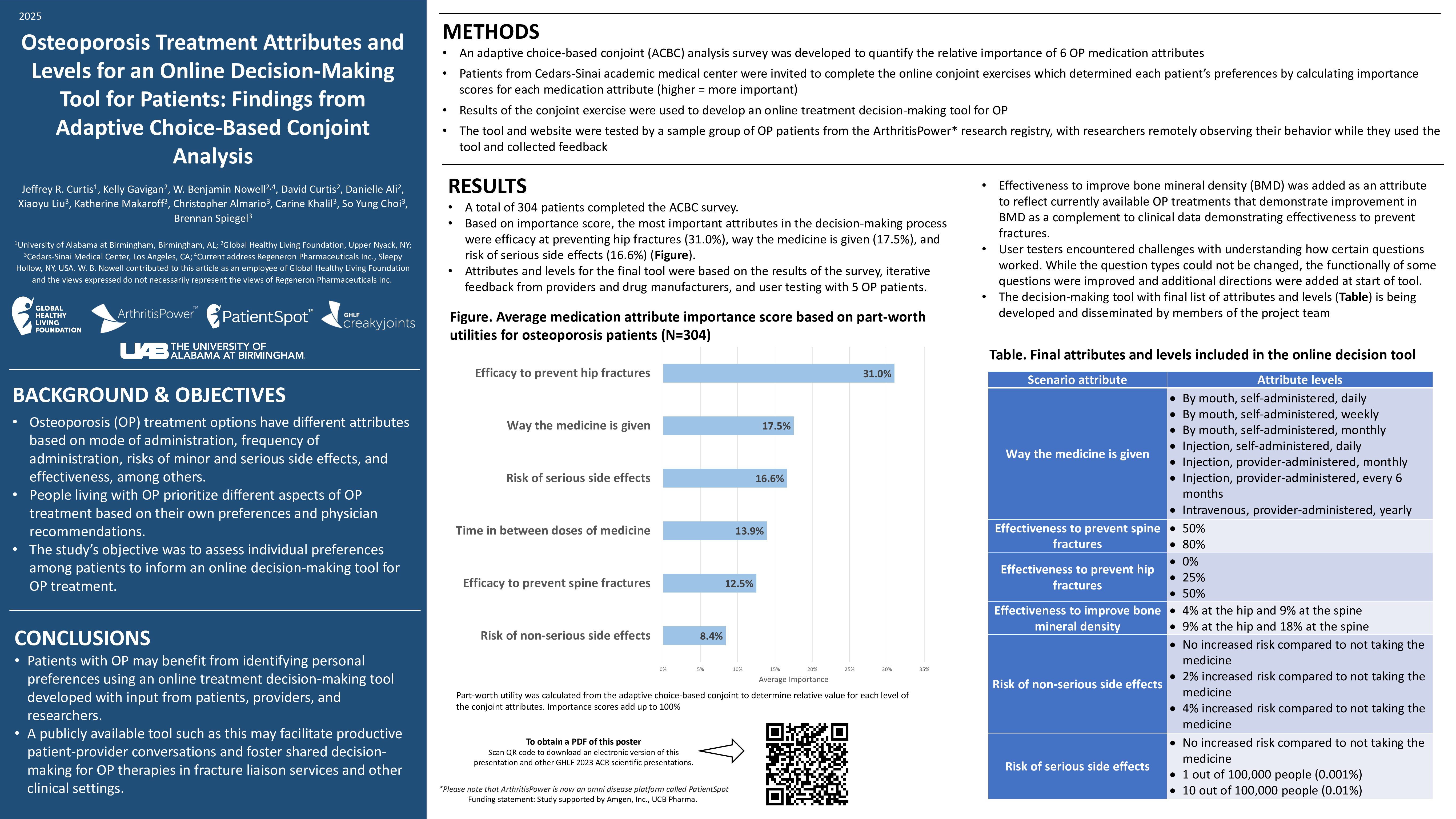When Guadalupe Torres was diagnosed with rheumatoid arthritis at age 16, the news came as a complete shock. She had always thought of arthritis as an “old person’s disease.” Surely, she was too young to have arthritis? But tests and imaging confirmed that the body-wide pain and stiffness she’d been experiencing for months was due to rheumatoid arthritis (RA), a chronic inflammatory condition that causes inflammation and swelling in the joints and can affect many other organs and parts of the body too.
In addition to being shocking and somewhat scary, the diagnosis was very isolating.
“I didn’t have a community or know any people my age who also had arthritis,” says Guadalupe, now 23. “I would go to my rheumatologist and be surrounded by older people who would stare at me like I was in the wrong area. That just made me think, ‘No one else has this. I’m the only person in the entire world with it.’”
Her young age was only one factor that made it hard for Guadalupe to accept and understand her disease. Another challenge: being a first-generation Latina whose family didn’t know much about navigating the U.S. health care system or managing a complex condition like RA.
Guadalupe details this challenging journey in a poster presented at ACR Convergence 2021, the annual meeting of the American College of Rheumatology.
“Despite being disproportionately affected by rheumatic conditions, the perspectives of Latinx remain poorly understood by rheumatology professionals and as such, we are more likely to experience negative health outcomes,” she says in the poster. In it, she shares why and how she went from feeling isolated and disengaged in her care to reconsidering the role she can play as a young advocate in the Latinx rheumatic disease patient community.
Facing Many Barriers to Health Care
Guadalupe’s parents, who immigrated to the United States from Mexico in the ’90s, are native Spanish speakers. Though they can understand English, Guadalupe says medical conversations are a “whole other level of comprehension.”
Finding an interpreter was challenging in Minnesota, where Guadalupe says there was not a large Latinx community. It was up to Guadalupe to serve as a translator between her parents and rheumatologist. This made it more difficult for Guadalupe and her parents to understand the disease and advocate for her care.
In particular, language barriers made it challenging to discuss alternative medicine like herbal teas, which Guadalupe says are often tried in her culture before Western medicine like pills or injections. As a teenager, Guadalupe didn’t know how to talk to her doctor about whether her family and cultural approach to medicine could fit into the treatment plan her rheumatologist was recommending.
Ultimately, Guadalupe says she and her parents “just had to trust that my doctor was doing the best thing for me.”
But that trust eventually waned. Noting in her poster that “Western medicine and my culture’s beliefs are often in conflict,” Guadalupe says she “spent years disengaged with my health care, without health insurance or a rheumatology provider.”
By 2016, she stopped seeing the doctor and taking her medication altogether. “I still didn’t know anyone my age who [had RA] like me — and I was just over it,” Guadalupe says.
A Life-Changing Class
It would take two more years for Guadalupe to finally connect with someone else with rheumatoid arthritis. On her first day of class during her sophomore year at University of Wisconsin-River Falls, the professor disclosed her own RA diagnosis, so as not to worry students if she showed up with a cane.
“I looked at her and we made eye contact, and I think she knew I also had rheumatoid arthritis just because of the way that we were looking at each other,” Guadalupe recalls.
Guadalupe approached the professor after class, expressing gratitude and relief that she finally met an RA patient who was closer to herself in age. From that day, the professor became Guadalupe’s chronic illness confidant, updating her on new research, sharing support groups to join or events to attend, and providing an ear when Guadalupe needed to talk.
Connecting with the Patient Community
Although Guadalupe was feeling more knowledgeable about her illness, she still wasn’t comfortable talking about with others or addressing it with treatment. She continued with her studies and graduated in May 2020, unsure of what would come next — an uncertainty many college graduates face, but one that was compounded by the COVID-19 pandemic.
Then one day, her professor called her with a unique opportunity: to interview Spanish-speaking people with rheumatic conditions for a study about how they were coping during the pandemic. Guadalupe saw this as a chance to connect with people who had similar health conditions and cultural backgrounds — and to help raise the voices of a marginalized community.
Informed by her own experience after getting diagnosed with RA, “I realized over the last few years what sort of health disparities the Latinx community faces,” says Guadalupe. “For example, not having an interpreter when I was first diagnosed. What if I only knew basic English? How would that have shaped my health care? I wanted to make sure that people who spoke Spanish were able to participate and get their views, ideas, and experiences heard on a larger platform.”
The study, which is being presented at the American College of Rheumatology Convergence 2021, assessed the impact of the COVID-19 pandemic on a diverse group of people with rheumatic diseases. Guadalupe and her fellow researchers found that many participants “felt unsupported by all levels of the health care system, from direct interaction with providers to messages received from public health authorities.”
But Guadalupe found that there was an added level of concern among Spanish-speaking people. “People who didn’t speak English were even more afraid because they didn’t have information in their language that they could understand available right away,” she says.
Read more here about the research project.
Activated and Ready to Advocate
When Guadalupe started working on the study, she had not seen a rheumatologist in several years and would only confide in a few people about her disease. The project sparked a powerful change for Guadalupe.
To start, she is working on finding a rheumatologist and resuming her RA management. “Speaking to people who have this condition and look like me has made realize I need to see a rheumatologist, but that I should dig a little more to find someone who has that cultural background,” Guadalupe says. “I’m learning that I can have more control over what my health care plan looks like.”
She has also taken steps to be a more active patient advocate and speak out about her experience — something that, as a person of color, can come with a lot of pressure.
Guadalupe recognizes that just because someone is a person of color doesn’t mean that they should be treated as a spokesperson for the entire community. “I want to speak not necessarily for my community but about who I am as part of this community,” she says.
Writing the poster for the American College of Rheumatology meeting was one of Guadalupe’s first big steps in advocacy. She has joined several patient groups geared toward younger people dealing with rheumatic diseases. She changed her career path and is currently working for a Latinx nonprofit.
Though Guadalupe has already made some big changes, she’s ready to keep going. “I’m still looking to see what I can do in the future,” she says. “This project has made me the person I am today, as cheesy as it is to say, and opened my eyes to how I can help change the systems.”
As Guadalupe concluded in her poster, “I am reinvigorated to utilize my expertise as a first-generation Latina with a rheumatic condition to fight for my own health as well as for health equity in my community.”
Want to Get More Involved with Patient Advocacy?
The 50-State Network is the grassroots advocacy arm of CreakyJoints and the Global Healthy Living Foundation, comprised of patients with chronic illness who are trained as health care activists to proactively connect with local, state, and federal health policy stakeholders to share their perspective and influence change. If you want to effect change and make health care more affordable and accessible to patients with chronic illness, learn more here.
Interview with Guadalupe Torres, rheumatoid arthritis patient
Torres G. Fighting for the Care We Deserve: My Experience as a Latina Patient-Researcher During the COVID-19 Pandemic. Arthritis Rheumatology. 2021. https://acrabstracts.org/abstract/fighting-for-the-care-we-deserve-my-experience-as-a-latina-patient-researcher-during-the-covid-19-pandemic/
Wells C, et al. Impact of the COVID-19 Pandemic on the Quality of Life of Patients with Rheumatic Conditions: A Qualitative Analysis of Perceived Risk and Decision Making. Arthritis Rheumatology. 2021. https://acrabstracts.org/abstract/impact-of-the-covid-19-pandemic-on-the-quality-of-life-of-patients-with-rheumatic-conditions-a-qualitative-analysis-of-perceived-risk-and-decision-making/.

